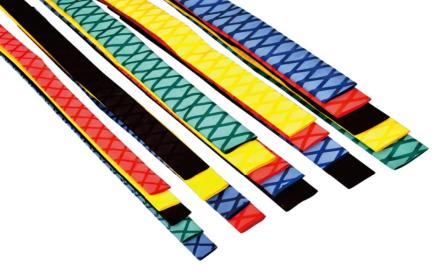Heat Shrink Tubing is a critical component in electrical applications, providing insulation, protection, and organization for wiring and connections. However, to ensure user safety and the reliable performance of electrical systems, it is essential to adhere to relevant safety and compliance standards. This article discusses key safety and compliance standards that govern heat shrink tubing in electrical applications.

1. Understanding Heat Shrink Tubing Standards
Heat shrink tubing is subject to various national and international standards that dictate its performance, safety, and quality. Compliance with these standards ensures that the tubing can withstand the electrical, thermal, and mechanical stresses encountered in real-world applications.
2. Key Safety and Compliance Standards
UL (Underwriters Laboratories) Certification:
One of the most recognized safety standards in North America, UL certification indicates that a product has been tested for safety and performance. Heat shrink tubing that meets UL standards is subjected to rigorous testing for flame resistance, insulation properties, and overall durability.IEC (International Electrotechnical Commission) Standards:
The IEC sets international standards for electrical and electronic devices. Heat shrink tubing compliant with IEC standards ensures that it meets global safety and performance requirements, making it suitable for international use.RoHS (Restriction of Hazardous Substances):
RoHS compliance signifies that heat shrink tubing is free from specific hazardous materials, such as lead, mercury, and cadmium. This standard is particularly important in Europe and aims to reduce environmental impact and improve safety for users.REACH (Registration, Evaluation, Authorisation and Restriction of Chemicals):
REACH compliance requires manufacturers to disclose the chemical substances used in their products. Heat shrink tubing that meets REACH standards ensures that it does not contain harmful substances, promoting user safety and environmental responsibility.ISO (International Organization for Standardization) Certification:
ISO standards cover a broad range of quality management practices. Manufacturers of heat shrink tubing that are ISO-certified demonstrate their commitment to maintaining high-quality production processes, which directly impacts the reliability and safety of their products.
3. Importance of Compliance
Compliance with these safety and performance standards is essential for several reasons:
User Safety: Non-compliant tubing may pose electrical hazards, leading to short circuits, electrical fires, or equipment failures. Adhering to safety standards minimizes these risks.
Performance Reliability: Compliance ensures that heat shrink tubing can withstand the conditions it will encounter in applications, such as temperature fluctuations, moisture exposure, and mechanical stress.
Legal and Regulatory Requirements: Many industries have specific regulations requiring compliance with safety standards. Failing to meet these requirements can result in legal consequences and potential liability.
4. Best Practices for Ensuring Compliance
Choose Certified Products: Always select heat shrink tubing that has been tested and certified by recognized organizations like UL or IEC. Look for product labels indicating compliance.
Regular Audits and Inspections: Conduct regular audits of suppliers and manufacturers to ensure they maintain compliance with safety standards.
Stay Informed: Keep up with changes in regulations and standards affecting heat shrink tubing and electrical applications to ensure ongoing compliance.
5. Conclusion
Safety and compliance standards play a vital role in the performance and reliability of heat shrink tubing in electrical applications. By adhering to these standards, manufacturers and users can ensure that their products meet safety requirements, reducing the risk of electrical hazards and promoting user safety. As technology and regulations continue to evolve, staying informed and compliant will remain crucial for the effective use of heat shrink tubing in various applications.





 English
English
